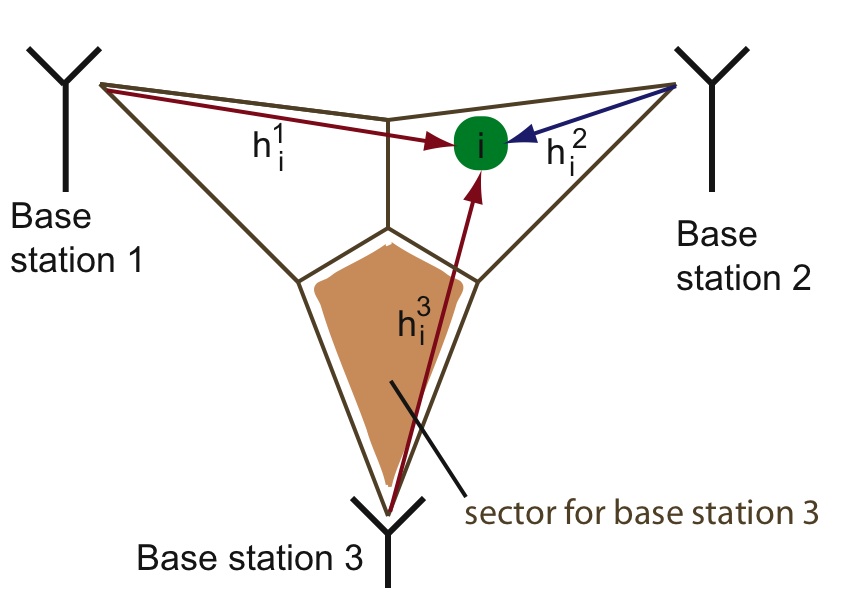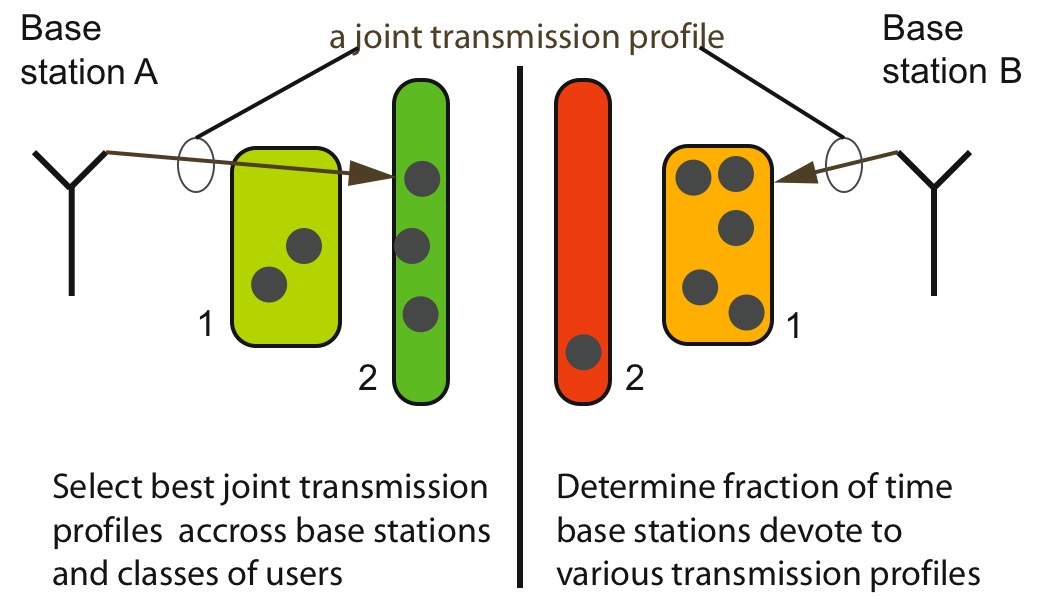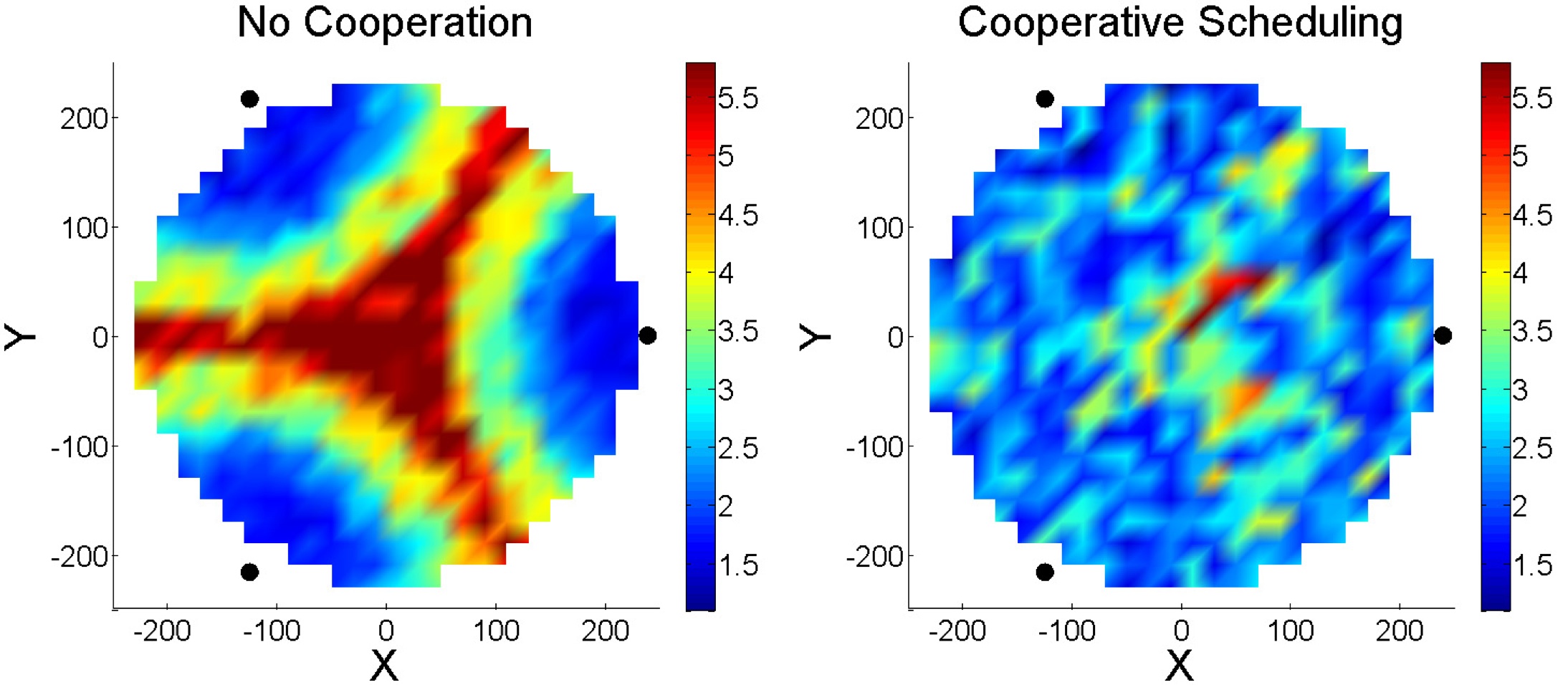Architecture and abstractions for environment and traffic aware system-level coordination of wireless networks.
Investigators:
Gustavo de Veciana ,
Constantine Caramanis
Graduate Students: Balaji Rengarajan, Bilal Sadiq
Support: This project was initially supported by a gift
from the Intel Research Council and now extended in scope with support
from the National Science Foundation Award CNS-0721532.
Goal:
In this research we propose a system-level framework whose primary goal is to mitigate the impact of inter-cell interference through coordination of transmissions. The approach is driven by two key objectives that differentiate it from previous work with a view on both effectiveness and practicality. The first is that coordination of transmissions should be environment- and traffic-aware. Our expectation, is that system performance can be substantially improved relative to the state-of-the-art, as well as solutions proposed in the research literature. The second objective is to minimize the information that needs to be exchanged among base stations, and thus reduce the demands on the backhaul. This excludes approaches that require fine grain information on the time varying channels of individual users to be exchanged among base stations to enable joint scheduling and coordination of transmissions across base stations.


Approach :
Traffic and environment awareness are achieved by measuring the average traffic loads and characteristics of the user population a system supports. If the `average' traffic loads are fairly stable over reasonable periods of time one should ideally be able to optimize a coordination scheme to the specific spatial traffic load, propagation environment, and factor the sensitivity to interference seen in the field. Thousands of measurements per second are already performed in the system, in order to adapt modulation and coding on a per user basis and trigger handoffs for mobile terminals. However, in order to limit the communication overheads, and the complexity of optimizing coordination, we seek to extract from the measured data the salient characteristics of the load -- i.e., coarse grained information that still captures the key characteristics of the traffic. This may
be viewed as a data-mining/aggregation task over fairly large (but local to a base station) measured data setsto define coarse grain classes of user loads. The figures exhibit measurements in a three sector region along with user classes that might be obtained based on a standard clustering algorithm. These in turn are used in formulating and optimizing the coordination schedule across base stations. The figure below shows how transmissions might be coordinated across user classes and base stations. The key idea is to take advantage of the diversity in users' sensitivity to interference originating from the adjoining cells -- this is not new. The novelty of our proposal lies in the development of new abstractions, a network architecture, and associated optimizations that make this practical, and efficient.

Key areas we are exploring: First, exploration of various tradeoffs in defining the coarse grain user classes from measured spatial loads with a view on optimizing system performance. We are exploring performance-complexity tradeoffs in the number of classes, variability in individual characteristics of users within a class, and balancing the sizes i.e., offered loads among user classes. Second, the study of various approaches to optimizing coordinated schedules, including new challenges associated optimizing the performance of systems subject to dynamic coupling due to interference. To date we have shown significant gains that can be achieved in terms of delay performance seen by data traffic, 50-80% improvement over no coordination depending on the load. In addition we have obtained substantial reductions in power consumption at the transmitter and enhanced spatially homogeneous service to users. The figures below show the spatial distribution for performance for system with and without coordination.

Representative Publications _____________________
Network Architecture and Abstractions for Environment and Traffic Aware System-Level Coordination of Wireless Networks: The Downlink Case
B. Rengarajan and G. de Veciana.
In Proc. IEEE INFOCOM, pages 1-9, April 2008. To appear.
Data mining and coordination to avoid interference in wireless networks
In Proc. 45th Annual Allerton Conference on Communication Control and Computing
B. Rengarajan and G. de Veciana.
, pages 1-10, September 2007.